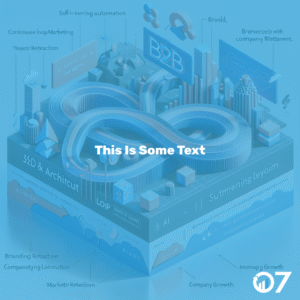Marketing success often hinges on the ability to understand and optimise various channels. This is where the media mix model plays a pivotal role. The media mix model leverages historical data to uncover insights about how each marketing channel contributes to overall business objectives such as conversions or revenue. Unlike last-touch attribution models, which focus on the last channel affecting a sale, the media mix model provides a comprehensive view by considering all channels.
At its core, the media mix model helps predict future performance, facilitating smarter decisions on budget allocations. The process typically begins with gathering comprehensive historical data, encompassing marketing spends, sales metrics, and market trends. A well-developed statistical model then interprets these to elucidate the effectiveness of each channel.
Understanding The Media Mix Model Framework
The framework comprises six essential steps. Data collection is pivotal and relies on high-quality, longitudinal data from varied marketing channels. Ensuring data hygiene is equally critical; clean data yields accurate analyses. Model development often employs machine learning to analyse the relationship between marketing inputs and outcomes. Human analysis complements machine insights, capturing nuances that AI might miss.
The optimisation phase applies insights gained to refine future marketing strategies. Lastly, forecasting uses existing data to predict potential outcomes, enabling marketers to refine hypotheses and continuously improve strategies.
Real-Life Examples
The true power of the media mix model is best illustrated through real-world applications. Marketing professionals have witnessed transformative insights, such as the identification of synergies between radio and social media campaigns, leading to increased engagement. Another profound revelation was how long-term brand-building efforts, such as podcast sponsorships, could significantly reduce customer acquisition costs over time, even if immediate ROI appeared minimal.
Tips For Implementing Media Mix Modeling
Start by accumulating extensive data, ideally covering 18-24 months, to capture long-term trends. The broader the dataset, the more reliable the insights, reducing the risk of misleading conclusions. Clean data is crucial; improper segmentation may hide key patterns. Ensure your data is segmented meaningfully to help extract valuable insights.
Additionally, balance evaluations of short-term trends against seasonal ones, as short-lived spikes can distort perspectives on performance. It’s essential to cross-check any outputs from your media mix model with longer-term metrics, confirming the projections from a balanced lens.
Conclusion
For digital marketers, the media mix model is an indispensable tool. It moves businesses beyond hunch-based decision-making, offering data-backed clarity on marketing effectiveness across channels. If you’re looking to delve into media mix modeling, remember to gather long-term data and correlate short-term findings with broader trends.
For more insights, visit our blog. Contact us via email at info@07hm.co.uk or call us on 01702 410663.





